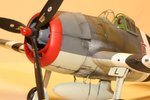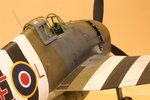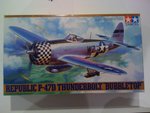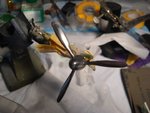Hi Everyone!
Great forum! By browsing your forum, you made me go out and buy a model to build. It has been a while but would like to get back into it. I purchased a Tamiya P-47D 1/48 scale and am going to paint it in "aluminum". Keep in mind that I don't have an airbrush yet, but hopefully will soon.
I have found most of the answers to my questions in your forum but need some clarification on a couple of things:
1) If I would want to pre-shade the panel lines, will I absolutely need an airbrush? Is there a way to achieve this look without an airbrush using some other materials? Is the final look worth it?
2) After painting the aircraft, is it best to put a gloss clearcoat down then apply the decals?
3) After the decals are applied, should a flat clear coat be applied to the whole aircraft to seal it?
4) I read the tutorial on weathering, chips, exhaust, etc. Any advice?
Again, thanks for a great forum!!
Scott
Great forum! By browsing your forum, you made me go out and buy a model to build. It has been a while but would like to get back into it. I purchased a Tamiya P-47D 1/48 scale and am going to paint it in "aluminum". Keep in mind that I don't have an airbrush yet, but hopefully will soon.
I have found most of the answers to my questions in your forum but need some clarification on a couple of things:
1) If I would want to pre-shade the panel lines, will I absolutely need an airbrush? Is there a way to achieve this look without an airbrush using some other materials? Is the final look worth it?
2) After painting the aircraft, is it best to put a gloss clearcoat down then apply the decals?
3) After the decals are applied, should a flat clear coat be applied to the whole aircraft to seal it?
4) I read the tutorial on weathering, chips, exhaust, etc. Any advice?
Again, thanks for a great forum!!
Scott




